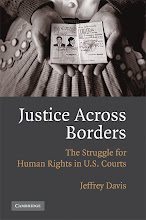Long Lee
Professor Davis
Poli 337
The Umbrella
Revolution
The Umbrella Revolution began in the end of September in
2014 and lasted until the beginning of December of the same year. Throughout
the movement, several major roadways were blocked and barricaded by the people
of Hong Kong in an effort to get the government to hear their demands. The
protestors operated under the concept of “non-violent disobedience” and simply
camped out on the major roadways. However, the Hong Kong government chose to
ignore any of the protestors’ requests. Additionally, the government authorized
the use of excessive force upon the protestors almost immediately after the
protests started. Several of the protestors were beaten and badly hurt. Many
were hospitalized and some even beaten to the extent of being put into a coma. Pepper
spray and tear gas were used to herd the protestors away in addition to riot
shields and beating.
The reasoning for the protest stemmed from China’s persistence
on having candidates for Hong Kong’s upcoming 2017 election for chief executive
all go through a screening process. According to the contract drafted between
Britain and China in 1997 when the territories of Hong Kong were given to
China, China and Hong Kong were to operate as “one country; two systems.” Hong
Kong was to retain its autonomy and be free from any form of political
influence from China for the next 50 years. Insisting that candidates go
through a screen process was seen by Hong Kong as a breach of the contract.
However, what it more importantly represents is the beginning of China’s
influence into Hong Kong. On July 1st, 2047, after the 50 year
period of political immunity, China will be given complete control of Hong Kong’s
politics and rights. The greatest fear of Hong Kong and its people is that
China will assimilate Hong Kong into itself thereby stripping Hong Kong of the
identity it once had.
Two of the sites where major roadways being blocked were the
Mong Kok area and the Admiralty area. The Mong Kok area was an extremely
aggressive site with signs of aggression from both sides. Protestors showed
great resistance towards cops by refusing to leave their stops. Protestors all
wore helmets and had make shift shields and umbrellas to protect them from the
police officers’ aggression. They also wore saran wrap over their bodies to
protect from substances the officers would use. From the police officer’s side,
they used excessive force on defenseless citizens. While the Admiralty site was
more peaceful, there were still injustices that occurred. The protestors were
much less aggressive than the Mong Kok area and had that taken advantage of by
the police officers. The officers would often launch surprise attacks where
they would run at protestors in formation when least expected to force them to
move. In both sites, the police officers treated the protestors almost as if
they were inhuman. Officers would bet and harass them constantly and herd them
around to get them to end the protests as if they were animals.
When the protests at both the Mong Kok and Admiralty
sites were finally quelled, nothing was accomplished. The government did not
pay any attention to the requests of the people and acted rashly and with brute
force in order to silence them. The protestors themselves were also very brash
and did not think their ideas through. The movement itself was only back by a
small percentage of Hong Kong people; most of them being high school and
university students that just wanted a change. Both sides of this movement
showed injustices but it is still clear that it was the side of the protestors
that received the crueler injustices.


No comments:
Post a Comment